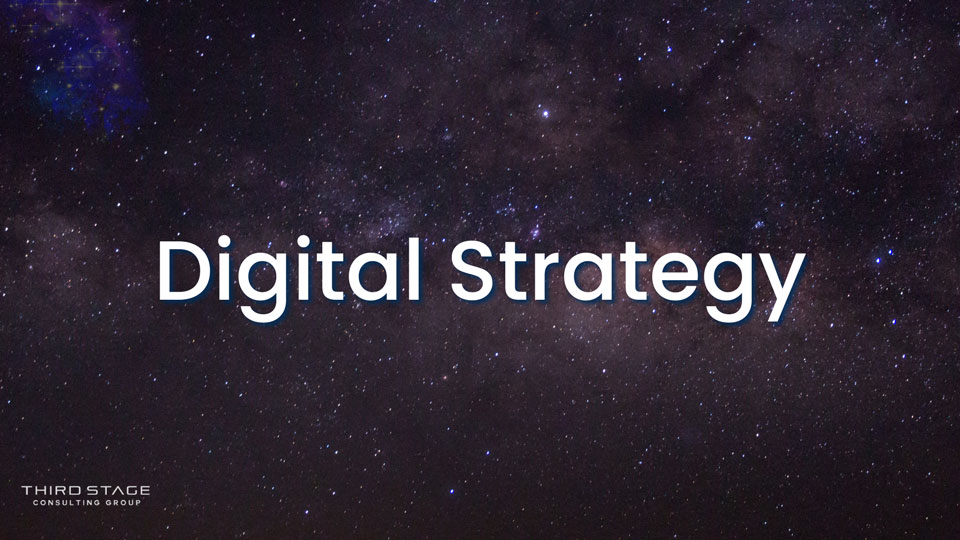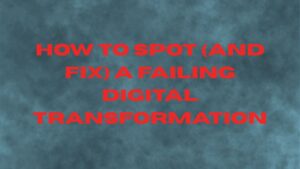But when companies rush into digital transformation without clear planning, the result isn’t a strategy—it’s a digital tragedy.
Many organizations jump into ERP implementations headfirst, believing that technology alone will fix their problems. But without a well-defined digital strategy, they end up with:
- Over-budget, delayed implementations
- Technology that doesn’t align with business needs
- Frustrated employees and poor adoption
- Little to no return on investment from their technology spend
So, how do you avoid a digital tragedy and craft a winning digital strategy?
Table of Contents
Toggle1. Align Your Strategy with Business Goals
One of the biggest mistakes companies make is focusing on technology first and business needs second. This approach leads to confusion, misalignment, and ultimately, failure.
A winning digital strategy starts with clarity—what does the business want to achieve? How will technology support these objectives? The executive team should define clear goals, key performance indicators, and success metrics before selecting a single piece of software.
A company that rushes into ERP selection based on vendor promises often ends up with a rigid, one-size-fits-all solution that disrupts operations.
How to Fix It:
- Get leadership buy-in on business objectives before discussing technology.
- Define clear priorities such as cost reduction, efficiency, growth, or customer experience.
- Ensure technology enables business goals, not the other way around.
2. Managing Cost and Risk from Day One
ERP failures often stem from poor cost control and risk management. Companies assume their budget is fixed, only to be blindsided by:
- Scope creep
- Customization overload
- Integration challenges
- Hidden implementation costs
The best digital strategies include detailed cost estimates, risk assessments, and contingency plans upfront.
A company that underestimates the complexity of data migration and system integration often faces unexpected costs, delays, and even implementation failure.
How to Fix It:
- Budget realistically—factor in implementation, customization, training, and ongoing maintenance.
- Identify high-risk areas early, such as data migration, change management, and third-party integrations.
- Implement milestones and checkpoints to monitor budget overruns.
3. Prioritize Business, Not Just Technology
Many ERP and digital transformation failures occur because organizations focus too much on software selection and not enough on business process improvement.
Technology should be an enabler of business transformation, not the driving force. Companies that succeed in digital transformation start with process optimization, people, and strategy—then layer in technology.
A company that blindly follows vendor recommendations often forces operations to fit into a rigid ERP template instead of designing a system that enhances their unique workflows.
How to Fix It:
- Start with a business process review before selecting software.
- Do not assume out-of-the-box solutions will work—customization might be necessary.
- Ensure your ERP supports how you work, not the other way around.
4. Invest in Change Management to Prevent Failure
Technology does not fail—people fail to adopt technology. Change management is the most important factor that determines whether a digital transformation succeeds or crashes.
Companies with strong digital strategies invest early and heavily in change management. They train employees, communicate the vision, and ensure teams feel involved in the transformation.
A leadership team that assumes employees will “figure it out” often ends up with frustrated teams, low adoption, and workarounds that sabotage efficiency.
How to Fix It:
- Establish a change management plan from day one.
- Provide training, support, and clear communication to employees.
- Get employee buy-in early by listening to concerns and adjusting accordingly.
5. Avoid Vendor Lock-In and Overreliance on a Single System
Many ERP vendors push organizations into all-in-one solutions, convincing them that a single suite will handle everything. But no ERP system is perfect—relying entirely on one vendor limits flexibility and creates risk.
Smart organizations take a best-of-breed approach, selecting the right mix of ERP, CRM, AI, and analytics tools to meet their needs.
A company that buys into one vendor’s entire ecosystem often discovers that some modules lack critical features, forcing them into expensive workarounds or additional software purchases.
How to Fix It:
- Evaluate best-of-breed solutions alongside ERP suites.
- Consider AI, automation, and analytics tools to complement your ERP.
- Avoid vendor lock-in and keep flexibility in mind for future growth.
6. Make Business Value and Return on Investment a Priority
A digital transformation should deliver tangible business value—not just implement new software for the sake of it.
The best digital strategies ensure that every technology investment has a clear return on investment. Companies track progress, measure impact, and adjust as needed.
A company that implements an ERP but never tracks performance improvements or financial gains often realizes too late that they spent millions with no measurable return.
How to Fix It:
- Set clear key performance indicators and success metrics for the project.
- Use data analytics to track efficiency, cost savings, and productivity gains.
- Continuously optimize and refine the system post-implementation.
Turning a Digital Tragedy into a Digital Strategy
If your digital strategy is driven by business needs, aligned with leadership, and backed by change management, you are on the right track. But if you:
- Start with technology instead of business goals
- Underestimate costs and risks
- Neglect change management
- Ignore business value and return on investment
…then you are headed straight for a digital tragedy.
For insights on how to build a winning digital strategy, download Third Stage Consulting’s 2025 Digital Transformation Report, which includes case studies, best practices, and expert recommendations for successful ERP and digital transformation projects.
Get your free copy here: https://www.thirdstage-consulting.com/reports/2025-digital-transformation-report/
A digital transformation does not have to be a cautionary tale. With the right strategy, it can be a game-changer.






